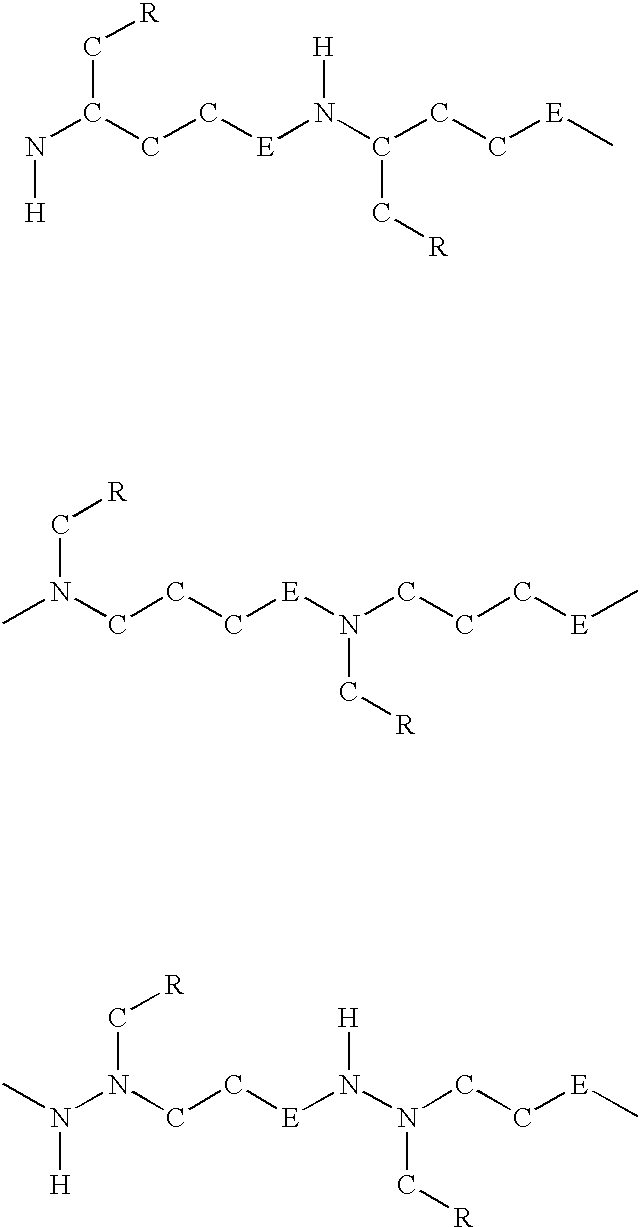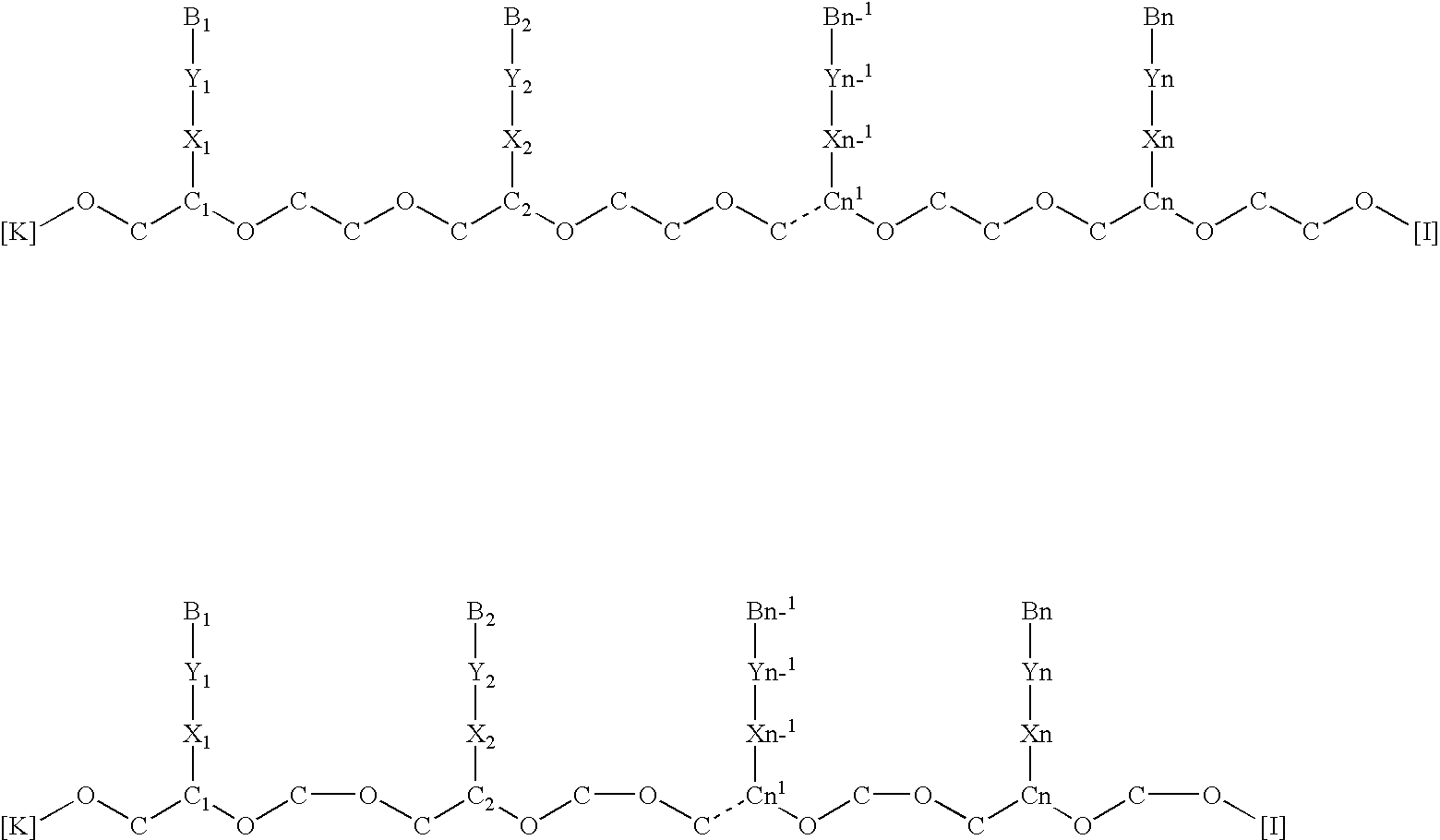Nucleic acid derivatives
a technology of nucleic acid and derivatives, applied in the field of nucleic acid derivatives, can solve the problems of interference with correct splicing, less routine chemical synthesis of oligoribonucleotides, and impaired gene expression
- Summary
- Abstract
- Description
- Claims
- Application Information
AI Technical Summary
Problems solved by technology
Method used
Image
Examples
example 2
Preparation of cytosine-PEG monomer (PEG-C)
[0277] The preparation of a cytosine-PEG monomer (PEG-C), according to the present invention, is effected by two alternative synthetic routes.
[0278] In one alternative, synthetic route A, the synthesis of PEG-C is based on the modification of uracil base to 2,4-diazaphenoxazine ring, which is aimed at enhancing the Pi-stacking of the PEG-oligomer, as is described by Dimitry et al., Nucleosides & Nucleotides (1997), vol 16, 1837 FIGS. 4a(i)-(iv) schematically illustrate synthetic route A of PEG-C.
[0279] In another alternative, synthetic route B, the structure of the cytosine base remains intact. Synthetic route B of PEG-C is detailed hereinafter and is further schematically illustrated in FIGS. 4b(i)-(iv).
[0280] Preparation of 4-(1,1-Dimethylethyl)-N-[1,2-dihydro-2-oxo-4-pyrimid-inyl]benzamide (Compound 25); To a suspension of cytosine (5.0 grams, 43 mmoles) in a mixture of 1:4 pyridine:dichloromethane (50 ml), ter -butylbenzoyl chloride (Al...
example 3
Preparation of a thymine-PEG monomer (PEG-T)
[0298] A thymine-PEG monomer (PEG-T) was prepared according to the processes described hereinafter. The preparation of PEG-T is further schematically illustrated in FIGS. 5(i)-(ii).
[0299] Preparation of 1-N-benzoylthymine (Compound 31): 1-N-benzoylthymine was prepared according to Cruikshank et al., Tetrahedron Letters (1984), 25, 681.
[0300] TLC (9:1 dichloromethane:methanol): Rf=0.55.
[0301] Preparation of 3-benzyloxymethythymine (Compound 32): To a solution of 1-benzoylthymine (Compound 31) (19.5 grams, 84.8 mmoles) in dry acetonitrile (200 ml, 1,8-diazabicyclo[5,4,0]undec-7-ene (DBU) (Aldrich) (15 m.) was added in one portion and 60% benzyloxymethyl chloride ( om-chloride) (Aldrich) (23ml) was added thereafter, under argon atmosphere. The reaction was stirred at room temperature for two hours. The solvent was then evaporated to dryness and the residue was extracted with ethyl acetate (250 ml) and washed with water and brine. The organic ...
example 4
Preparation of an acyclic oligomer of PEG-T (OLIGO-PEG-T) in solution
[0314] The preparation of an oligomer of PEG-T, which is also referred to herein as OLIGO-PEG-T, is described hereinafter and is further schematically illustrated in FIGS. 6(i)-(ii).
[0315] Preparation of (S)-1-trityl-2-O-(ethybenzylether)-4-(3'-benzyloxy methylthymidine)-1,2,4-butanetriol (Compound 36) and (S,-2-O-(ethybenzyether)-4-(3'-benzyloxymethylthymidine)-1,2,4-butane triol (Compound 37): To a solution of Compound 34 (3.5 grams, 5.64 mmoles) in dry THF (20 ml), 60% NaH dispersed in oil (0.227 grams, 1.2 molequivalents of NaH) was added, under argon atmosphere. The slurry solution was stirred at room temperature for one hour and thereafter benzyl bromide (0.96 grams, 5.65 mmoles) was added. The reaction was stirred for 16 hours at room temperature. The solvent was then evaporated to dryness and the residue was extracted with ethyl acetate (250 ml) and washed with water and brine. The organic layer was dried o...
PUM
| Property | Measurement | Unit |
|---|---|---|
| Fraction | aaaaa | aaaaa |
| Fraction | aaaaa | aaaaa |
| Fraction | aaaaa | aaaaa |
Abstract
Description
Claims
Application Information
 Login to View More
Login to View More - R&D
- Intellectual Property
- Life Sciences
- Materials
- Tech Scout
- Unparalleled Data Quality
- Higher Quality Content
- 60% Fewer Hallucinations
Browse by: Latest US Patents, China's latest patents, Technical Efficacy Thesaurus, Application Domain, Technology Topic, Popular Technical Reports.
© 2025 PatSnap. All rights reserved.Legal|Privacy policy|Modern Slavery Act Transparency Statement|Sitemap|About US| Contact US: help@patsnap.com



